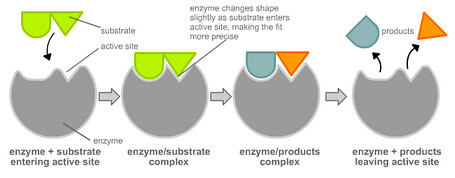

This is his theory. Enzyme as lock, key as substrate. Which breaks?
This is real life application. Which breaks?
Are we supposed to just feed in informations into our brains without thinking rationally or just because Daniel was a sought-after scientist and no normal humans could defy his theory? Or is it just... status quo?
4 comments:
When he say lock and key... it means that the enzymes are highly specific and can only catalyse a certain substrate, likewise, only 1 kind of key can only open 1 kind of lock an exception to those keys which could now open multiple locks.... not about which breaking... =-="
that question actually struck me when i first studied this thing and i got a bit confused at that time because of the same stuff you said.
but i think it's not like he's wrong. it's just the way of looking at things.
i think a key(enzyme) is supposed to open(break down) a lock(substrate).
but then, he thinks a key(substrate) is something that you put inside a lock(enzyme).
that's just what i think..
wern yeen, theoretically, there is nothing stating that which fits into which. they just say that they collide and ESC are formed and then substrates are broken into its monomers. i am glad someone is parallel with me!!! everyone seems to be thinking i am mad. we should dare defy status quo sometimes. in this case, he WAS wrong, wasn't he?
Hey, I am checking this blog using the phone and this appears to be kind of odd. Thought you'd wish to know. This is a great write-up nevertheless, did not mess that up.
- David
Post a Comment